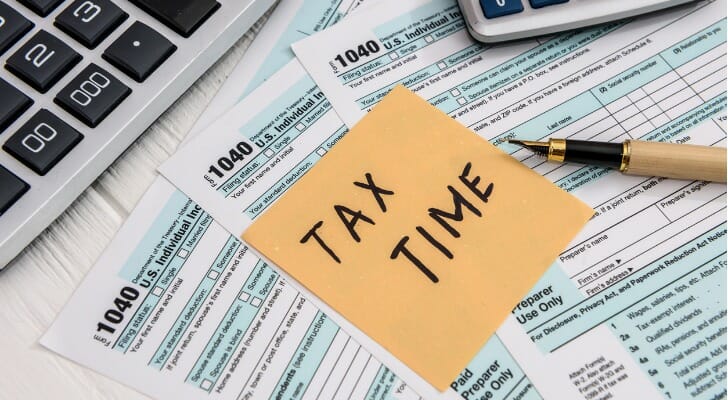
If you’re paying less in taxes as your taxable income increases, you’re likely following a regressive tax system. Regressive taxes offer an inverse relationship between income levels and tax rates; that is, a lower income will typically earn you a higher tax rate. A higher income, however, will earn you a lower tax rate. In this guide we take a closer look at how regressive taxes work.
A financial advisor can help you map out strategic tax planning moves that supplement both your short- and long-term goals.
How Does a Regressive Tax System Work?
In a regressive tax system, an individual’s tax burden decreases as income increases. This means that you’ll be taxed at a lower rate as your taxable income rises; you’ll be taxed a higher rate the lower your income is. So wealthier individuals will pay less in taxes than lower-income individuals. This is completely opposite to a progressive tax system, but we’ll explore those differences further below.
Types of Regressive Taxes
Below, we’ve identified some of the most common regressive taxes:
- Sales taxes: Sales taxes are applied to the purchase of retail goods and services. These act as regressive taxes because they take a larger percentage of money from lower-income individuals.
- Payroll taxes: These taxes are also commonly regarded as regressive since higher earners don’t have to pay them. Employees making less than $160,200 in 2023 will typically pay 6.2% in payroll taxes, while those earning above that amount will be payroll tax-exempt on the portion of their income greater than $160,200.
- Property taxes: Property taxes technically aren’t based on income levels; instead, they’re based on property value. This means that two property owners can end up paying similar taxes, even if they have significantly different income levels.
- Sin taxes: Sin taxes are applied to products (such as alcohol and tobacco) that are considered as harmful to society. The IRS labels these taxes as regressive since individuals with lower income pay more than higher-income earners do.
Regressive Tax vs. Progressive Tax
Regressive taxes benefit higher-income individuals since taxes decrease as income increases. With progressive taxes, however, taxes are based on an individual’s specific amount of taxable income, and the tax rates increase as income increases.
For instance, for single filers making between $0 and $11,000, the federal income tax rate is 10% for 2023. But single filers making more than $578,125 will be taxed at a 37% tax rate. The same applies to married couples filing jointly or separately, as well as heads of household. The federal rate starts at 10% and increases as income increases.
Bottom Line

With a regressive tax system, you’ll incur higher tax charges the lower your income is. As your taxable income rises, you’ll be taxed at a lower rate. And when it comes to payroll taxes, you won’t have to pay anything on the portion of your income greater than $160,200. Progressive tax rates rise as taxable income increases, though. It’s wise to make the distinction between both taxes when planning out your budget.
Tax Planning Tips
- A financial advisor can help optimize your financial plan to mitigate your tax liability. Finding a financial advisor doesn’t have to be hard. SmartAsset’s free tool matches you with up to three vetted financial advisors who serve your area, and you can interview your advisor matches at no cost to decide which one is right for you. If you’re ready to find an advisor who can help you achieve your financial goals, get started now.
- Our federal income tax calculator can help you determine how much you’ll pay in income taxes based on your location. You’ll simply need to enter your filing status, household income and location, and the tool will do the rest.
Photo credit: ©iStock.com/alfexe, ©iStock.com/damircudic